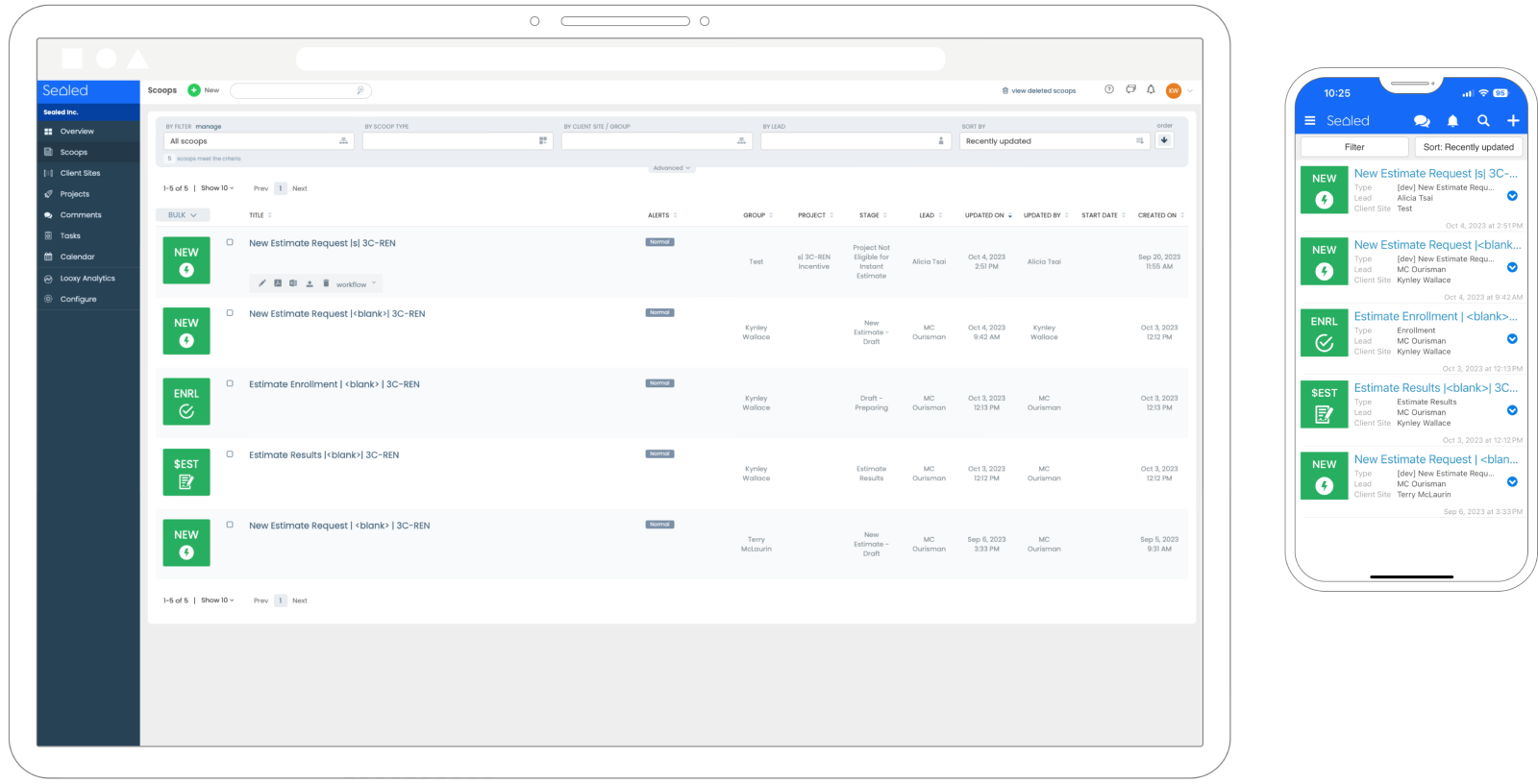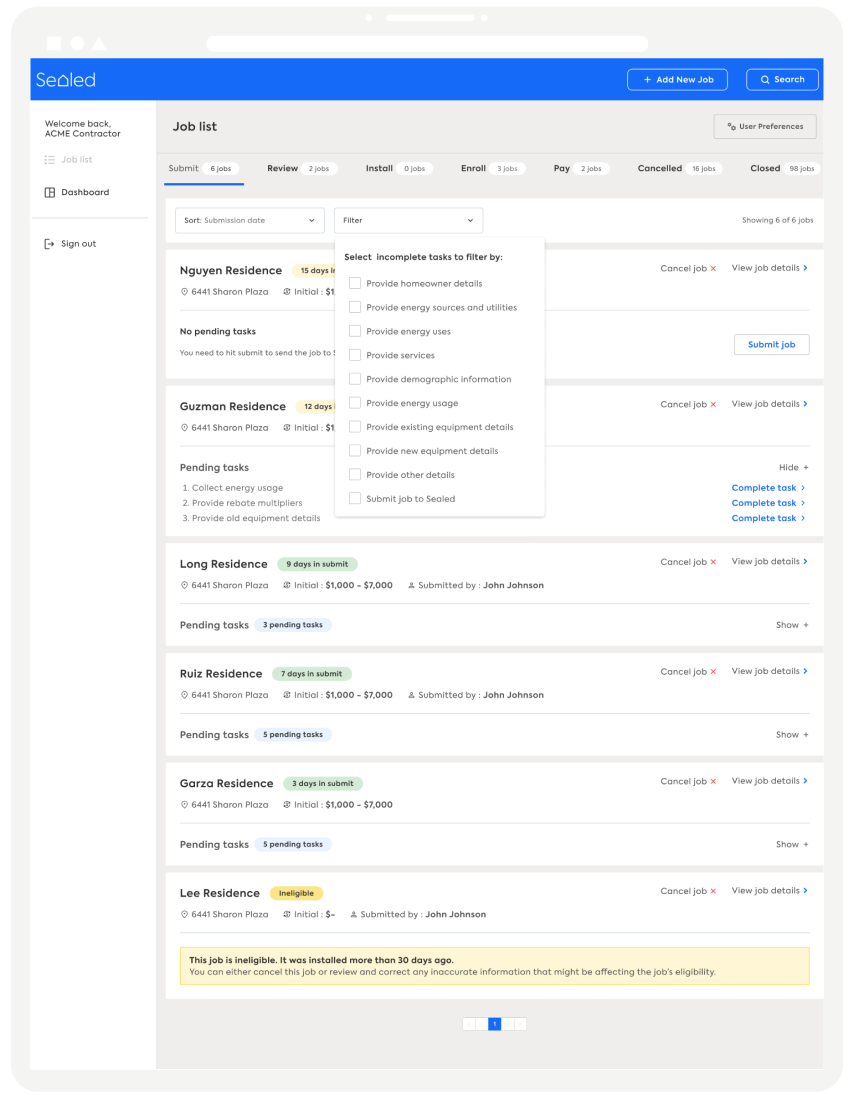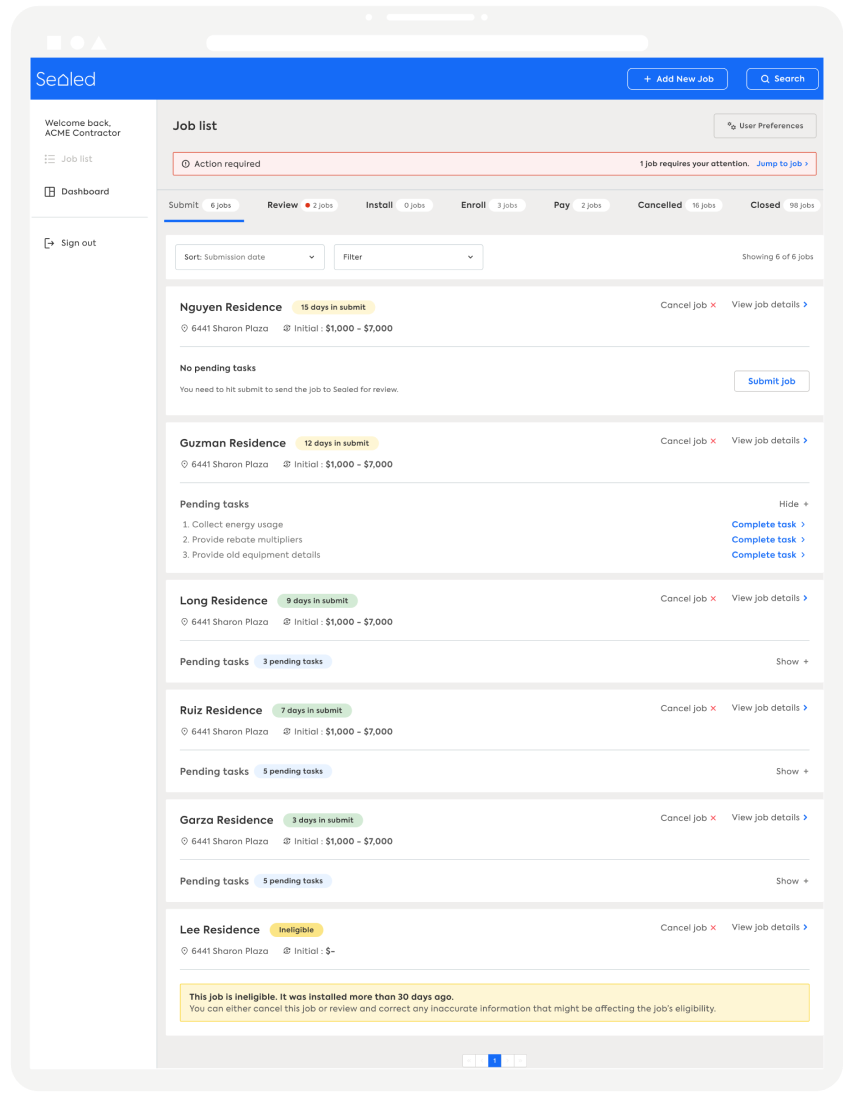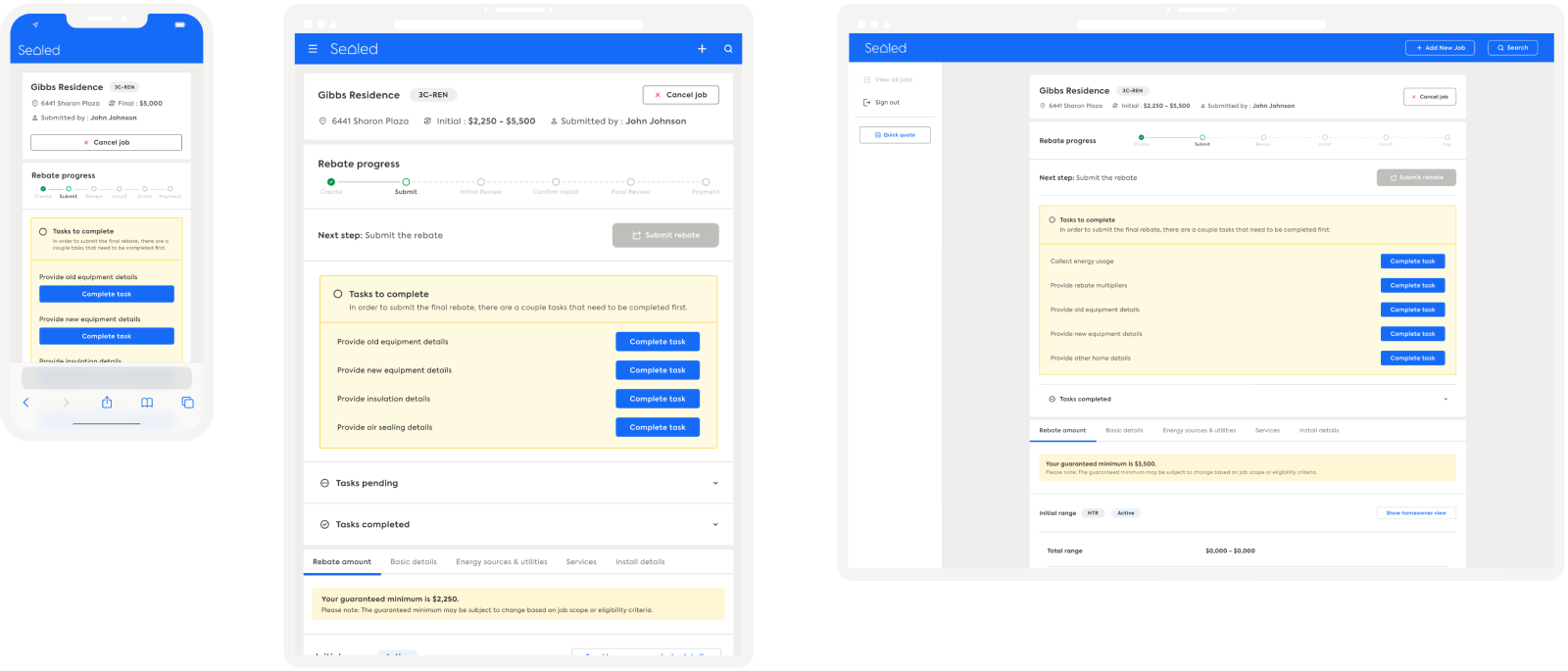Digital rebate submission software
Sealed Pro
designed and built: 2023 - 2024
overview
In Q4 2023, Sealed restructured its business model. The company moved from a B2C approach, providing financing and efficiency services to homeowners, to a B2B model. Sealed now focuses on creating strong software solutions to help contractors access significant rebates for homeowners upgrading to energy-efficient HVAC systems.
Rebates can be difficult to understand and often don't fit well with a contractor's regular work. Many new rebate programs also require contractors to cover the rebate costs for their customers for a whole year before getting reimbursed. This has created a clear need for software aimed at contractors to help manage these rebates more easily.
deliverables
User Interface
Comp Analysis
Prototyping
software
Figma
Streamline the needed info and documentation in one digital tool with a quick response time for contractors.
challenge
Rebates are more often than not managed by various government entities and are typically operated by human personnel, in stark contrast to digital products, which frequently feature slower turnaround times and complex form fields that can inadvertently create additional delays. Contractors require prompt responses to their inquiries, particularly the sales technicians, who find themselves in homeowners’ homes attempting to sell the job as effectively and efficiently as possible. Timeliness in communication is absolutely crucial for their overall success in closing sales and providing satisfactory service to their clients.
There is also a lot of organization involved with making sure all the different pieces of information required for the rebate’s approval were submitted at the right time with the right signatures and line items. Plus not every home qualified for the rebates. This was all information contractors do not usually have to gather from homeowners to complete the job without a rebate- so jobs could easily fall through the cracks if they did qualify or the office admin might sink a lot of extra time into a job only to find out after the fact that the job did not qualify.
existing experience
Before Sealed made the switch from a B2C model to a B2B model, they had initially started a small delivery team focused on testing the B2B model concept. This team was a tiny time of three people testing the waters of developing a SaaS product specifically designed for contractors. The goal was to help alleviate the various pain points associated with the often complex process of applying for rebates. During the early testing phase, we relied on a more out-of-the-box solution provided by a third party known as Scoop.
Scoop was primarily designed for solar panel installation jobs and offered very few customization options. While it effectively served its purpose during the exploratory period, it became increasingly clear that once Sealed transitioned to focusing solely on this product, a more robust and customizable tool would be essential to meet the growing needs of the contractors and the market.
existing customer interviews
Once we had the official go-ahead from the business model shift, the project manager and I began the process of interviewing various contractors in order to gain a deeper understanding of their existing pain points with the initial version of Scoop.
contractor take aways
overwhelming list of information required from the homeowner and the contractor
overwhelming to try to understand what stage of the rebate the job was in and how long it had been there
difficult to know quickly if the job qualified or not, which makes it incredibly difficult to know what to promise the homeowner
the ability to promise the homeowner an rebate amount during the sale was a huge win for the sales tech, but if they lost the rebate it caused a lot of turmoil between the contractor and homeowner
it was particularly difficult to know if there was an issue with some of the details that could be corrected and resubmitted
note about screen sizes
there are two main users; the office admin and the sales tech
the office admin is 100% of the time on a desktop computer while working
the sales tech is on mobile devices, but 75% of the time at least they’re on mobile tablets instead of phones
design solution exploration
We concentrated our efforts on two primary components of the software, specifically the job list page and the job details page, in order to address and resolve as many of these pain points as we could effectively manage.
job list details page
Jobs were grouped by the stage in the process they were in with clear time tickers showing how long the job had been in that stage.
Jobs could be sorted by submission date and the sales tech who created the job.
Jobs could be filtered by the missing tasks for each job to help streamline the office admins queue of tasks.
The office admin could see the high level list of missing tasks for each job without clicking into the job details.
action required on jobs
Previously there was no way Scoop could call out a specific job that had an issue that needed fixing.
The new designs let us highlight a job needing specific attention across the entire experience- and gave specific details on what needed to be corrected about the job straight from the job list page (again without the need to click into the job to see all the details).
job details page
Even when you were on the job details page, Scoop hid all of the details about the given job behind several clicks.
We prioritized calling strong attention to the incomplete tasks of a job at the top of the page.
While we didn’t want to overwhelm by showing every details of the job at once- we grouped details together by topic and let the contractor see all details of the job in the selected tab instead of behind multiple clicks.
tablet and desktop sizes prioritized over mobile
As discovered through our research, the primary users of the application were predominantly utilizing tablet-sized screens and desktop computers for their interactions. Consequently, we made a strategic decision to prioritize these two specific breakpoints in our design process. We also ensured that the overall design remained functional and visually coherent on the smallest screens, thereby maintaining an optimal user experience across various devices.
final designs
Introducing a streamlined SaaS solution designed specifically for busy contractors who need to maximize efficiency without the clutter. Our product offers a clean, intuitive interface that allows users to manage projects, track time, and streamline communication all in one place. With features tailored to the unique demands of the construction industry, you can eliminate distractions and focus on what truly matters: delivering quality work on time. Simplify your workflow, enhance collaboration, and experience the benefits of a focused software solution that understands your needs. Build smarter with us, and take your contracting business to the next level.
Review the designs in Figma












